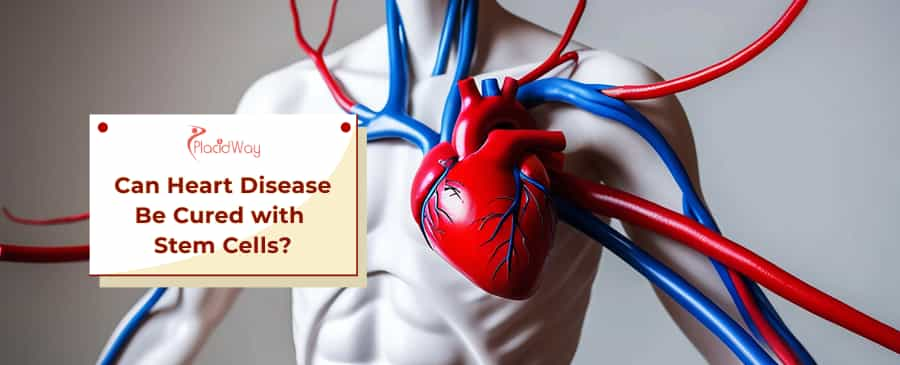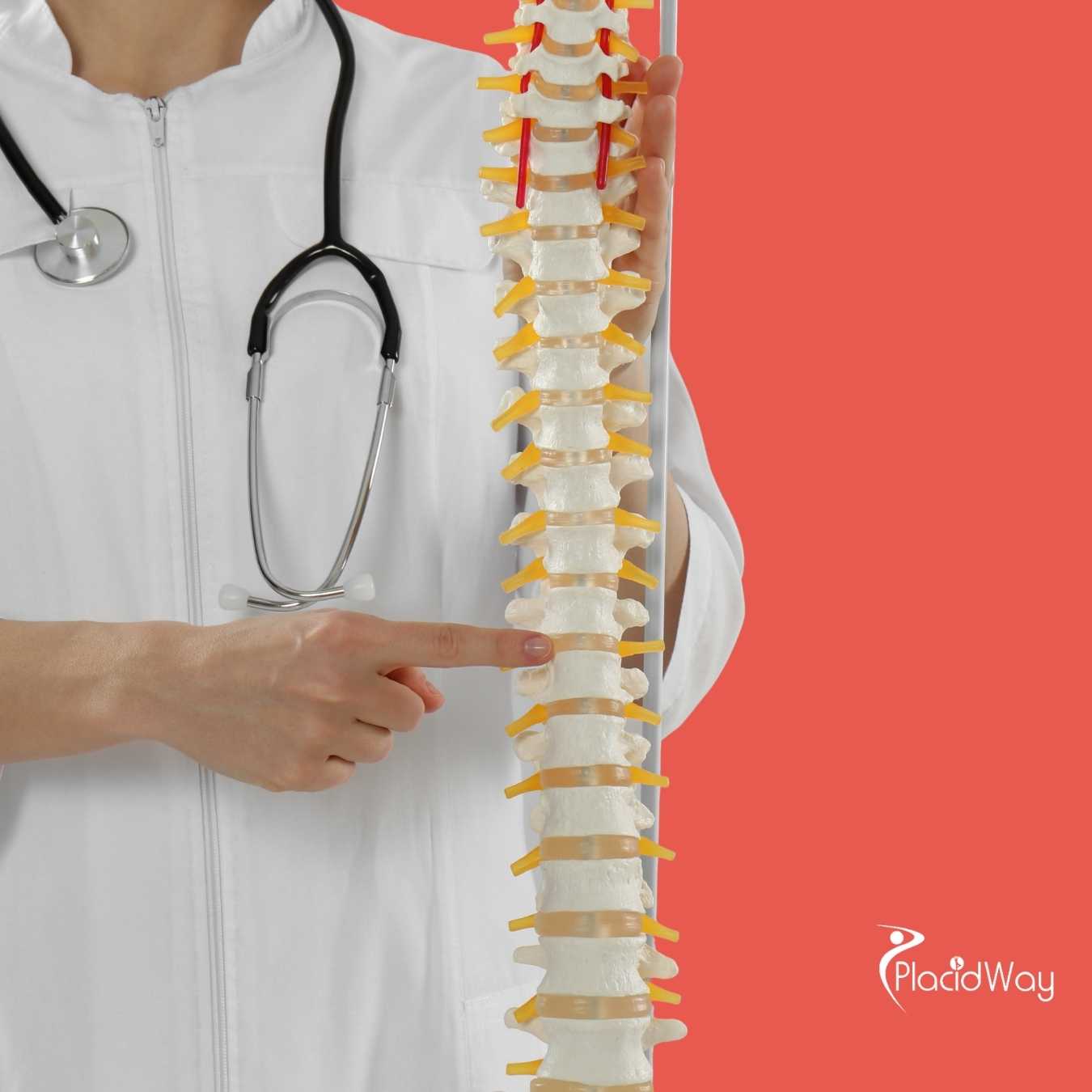From Damage to Renewal: How Stem Cells Could Cure Heart Disease

Welcome to a crucial discussion about one of the most pressing health challenges globally: heart disease. For many years, scientists and medical professionals have sought innovative ways to combat conditions like heart failure, myocardial infarction, and cardiomyopathy. Imagine a future where damaged heart tissue could simply regenerate, restoring full function and allowing individuals to live healthier, longer lives. This is where stem cells enter the conversation, offering a beacon of hope for revolutionary treatments.
The potential of stem cell therapy for heart disease is a topic of intense research and considerable excitement. While it's important to manage expectations, the advancements in understanding how stem cells can repair, regenerate, and replace damaged cardiac cells are truly remarkable. We'll explore the current state of this cutting-edge treatment, what it involves, its effectiveness, and what the future might hold, including the growing trend of medical tourism for these advanced therapies.
What is Stem Cell Therapy for Heart Disease?
Stem cell therapy for heart disease is a regenerative medicine approach that utilizes the unique properties of stem cells to promote healing and regeneration within the heart. These undifferentiated cells have the remarkable ability to develop into various specialized cell types, including heart muscle cells (cardiomyocytes), blood vessel cells, and support cells. The primary goal is to address the damage caused by conditions like heart attacks or chronic heart failure, where scar tissue replaces healthy, functional heart muscle.
The process typically involves extracting stem cells from a patient's own body (autologous cells) or from a donor (allogeneic cells). Common sources include bone marrow, adipose (fat) tissue, or peripheral blood. Once harvested and processed, these cells are then delivered to the damaged areas of the heart, usually through direct injection during surgery, via a catheter into coronary arteries, or intravenously. The hope is that these cells will integrate into the existing tissue, differentiate into new heart cells, stimulate the growth of new blood vessels, or release beneficial factors that reduce inflammation and promote healing, thereby improving heart function.
Can Stem Cells Regenerate Damaged Heart Tissue?
The concept of cardiac regeneration using stem cells is one of the most exciting frontiers in cardiology. When the heart experiences damage, such as after a heart attack, the affected muscle tissue dies and is replaced by fibrous scar tissue. This scar tissue does not contract and can lead to a significant reduction in the heart's pumping ability, often resulting in heart failure. Stem cells offer a biological approach to mitigate this damage.
Research indicates that stem cells contribute to heart repair through several mechanisms. They can stimulate the formation of new capillaries (angiogenesis), improving blood supply to the damaged area. They also release growth factors and cytokines that help reduce inflammation, limit scar tissue formation, and protect existing heart muscle cells from further injury. While direct differentiation into a large volume of new, functional heart muscle cells has proven challenging in human trials, the paracrine effects (the release of beneficial substances) of stem cells are widely acknowledged as key to their therapeutic potential, contributing to improved heart function and reduced symptoms of heart disease.
Is Stem Cell Therapy Approved for Heart Disease?
Despite its promise, stem cell therapy for heart disease is not yet a standard, approved treatment in most countries, including the United States, Europe, and Canada. Regulatory bodies like the U.S. Food and Drug Administration (FDA) typically classify these therapies as investigational products, requiring rigorous clinical trials to prove their safety and efficacy before widespread approval.
Currently, patients seeking stem cell therapy for cardiac conditions often participate in carefully controlled clinical trials, where the treatment is administered under strict medical supervision and ethical guidelines. These trials aim to gather robust data on various types of stem cells (e.g., mesenchymal stem cells, cardiac progenitor cells), different delivery methods, and their long-term outcomes for different forms of heart disease. While some therapies using minimally manipulated cells may be available in certain regions under specific regulations, a definitive, broadly approved stem cell cure for heart disease is still under development.
What Types of Heart Disease Can Stem Cells Treat?
The potential applications of stem cell therapy in cardiology are broad, targeting several forms of heart disease that lead to significant morbidity and mortality. The most extensively studied area is ischemic heart disease, particularly in patients who have suffered a myocardial infarction (heart attack). In these cases, stem cells are hoped to reduce scar size, improve blood flow, and enhance the pumping ability of the heart after the acute event.
Beyond acute events, stem cell therapy is also being explored for chronic conditions such as dilated cardiomyopathy, a condition where the heart muscle becomes stretched and thin, leading to weakened pumping. Patients with chronic heart failure, regardless of its underlying cause, are also candidates for trials, as the goal is to improve the heart's overall efficiency and reduce the need for hospitalizations. The aim across these conditions is not always a complete "cure" but a significant improvement in quality of life, reduction in symptoms, and preservation of heart function.
What are the Risks and Side Effects of Stem Cell Therapy for the Heart?
Like any medical procedure, stem cell therapy carries potential risks and side effects, even though it is generally considered safe when performed in regulated clinical settings. The specific risks can vary depending on the type of stem cells used, the method of delivery, and the patient's overall health.
Potential risks and side effects include:
- Procedure-related risks: These can involve complications from cell harvesting (e.g., pain, bleeding, infection at the bone marrow or fat aspiration site) or cell delivery (e.g., bleeding, infection, or damage to blood vessels or heart tissue during catheterization or direct injection).
- Cardiac-specific risks: There's a slight possibility of inducing arrhythmias (irregular heartbeats) or, in very rare cases, inappropriate tissue formation or abnormal cell growth, although current research and stringent cell processing protocols aim to minimize these risks.
- Immunological reactions: If allogeneic (donor) stem cells are used, there's a risk of immune rejection, where the patient's body attacks the introduced cells. This is typically managed with immunosuppressant medications, though autologous (patient's own) stem cells avoid this issue.
- Lack of efficacy: The primary "risk" in an experimental context is that the therapy might not produce the desired beneficial effect, meaning the patient undergoes a procedure without significant improvement in their heart disease.
Patients considering stem cell therapy should have a thorough discussion with their healthcare providers to understand all potential risks and benefits specific to their condition.
How Effective is Stem Cell Therapy in Improving Heart Function?
The effectiveness of stem cell therapy in improving heart function has been a central focus of numerous studies over the past two decades. While the initial enthusiasm for a complete "cure" has been tempered by the complexities of cardiac repair, the data from many clinical trials do show encouraging signs of benefit. Improvements are often observed in several key areas:
- Ejection Fraction (EF): This is a crucial measure of how well the heart pumps blood with each beat. Some studies have reported modest but significant increases in EF following stem cell therapy, particularly in patients with reduced heart function after a heart attack or with chronic heart failure.
- Symptom Relief: Patients often report improvements in symptoms like shortness of breath and fatigue, leading to an enhanced quality of life. This can be attributed to better heart efficiency and reduced inflammation.
- Exercise Capacity: Objective measures like the six-minute walk test have shown that some patients treated with stem cells can walk further and perform daily activities with greater ease.
- Scar Reduction and Perfusion: Imaging studies sometimes reveal a reduction in the size of scar tissue within the heart and improved blood flow (perfusion) to previously damaged areas.
It's important to note that the degree of improvement varies widely among studies and patients, and the long-term durability of these effects is still being actively investigated. While it may not offer a complete cure, stem cell therapy holds potential for significantly mitigating the progression of heart disease and improving patient outcomes.
What is the Future Outlook for Stem Cells in Cardiac Regeneration?
The field of cardiac regeneration using stem cells is dynamic and rapidly evolving. Scientists are continuously refining their understanding of how stem cells interact with damaged heart tissue and exploring new strategies to maximize their therapeutic potential. The future outlook involves several exciting avenues:
- Induced Pluripotent Stem Cells (iPSCs): These cells can be generated from a patient's own skin or blood cells and then reprogrammed to become heart muscle cells. This personalized approach avoids immune rejection and offers a potentially unlimited supply of patient-specific cells for repair or even growing new heart tissue in a lab for transplantation.
- Enhanced Cell Delivery: Researchers are developing novel biomaterials and scaffolds to improve the retention and survival of transplanted stem cells within the heart, ensuring they have a better chance to exert their beneficial effects.
- Combination Therapies: The future may involve combining stem cell therapy with other treatments, such as gene therapy or growth factor delivery, to amplify regenerative effects.
- Advanced Imaging and Monitoring: Improved techniques for tracking stem cells after transplantation and monitoring their impact on heart function will be crucial for optimizing treatments.
While a definitive "cure" for heart disease via stem cells may still be some time away, ongoing research suggests that increasingly effective and widely available therapies for cardiac repair and regeneration are on the horizon.
Can I Travel for Stem Cell Therapy for Heart Disease (Medical Tourism)?
Medical tourism for stem cell therapy for heart disease is a growing trend, as patients from countries where these treatments are not yet approved or are prohibitively expensive seek options abroad. Destinations like Germany, Panama, Mexico, and Thailand have established clinics that offer various forms of stem cell therapy, often citing their own research or operating under different regulatory frameworks.
While the accessibility can be appealing, it is absolutely essential to approach medical tourism for stem cell therapy with extreme caution. The regulatory landscape varies significantly between countries, and some clinics may operate with less stringent oversight than those in major medical research hubs. Patients must conduct thorough research to verify the credentials of the clinic and its medical staff, understand the specific type of stem cell therapy being offered, and evaluate the scientific evidence supporting its efficacy and safety for their particular condition. Reputable medical tourism facilitators can assist in navigating these complexities and connecting patients with accredited facilities.
What is the Cost of Stem Cell Therapy for Heart Disease in Different Countries?
The cost of stem cell therapy for heart disease is highly variable and depends on several factors, making it difficult to provide an exact figure. These factors include:
- Country and Clinic: Countries with lower operating costs often offer treatments at a reduced price compared to highly developed nations. For example, a clinic in Mexico or India might charge less than a specialized center in Germany.
- Type of Stem Cells: Different types of stem cells (e.g., adipose-derived, bone marrow-derived, umbilical cord-derived) may involve different harvesting and processing costs.
- Treatment Protocol: The number of infusions or injections required, the duration of hospital stay, and any supplementary therapies (e.g., hyperbaric oxygen therapy, nutritional support) will influence the total price.
- Inclusions: Some packages may include consultations, diagnostic tests, follow-up care, and even accommodation, while others might only cover the core procedure.
Patients exploring medical tourism for stem cell therapy should request detailed quotes that clearly outline all inclusions and exclusions. It's also crucial to consider additional costs such as travel, accommodation, and potential follow-up care back home. The allure of lower costs should never overshadow the importance of safety and clinical integrity.
| Region/Country | Estimated Cost Range (USD) | Notes |
|---|---|---|
| USA/Western Europe (Clinical Trials) | Often covered by research grants; commercial access is limited and very expensive | Not routinely available commercially; primarily in trials. |
| Germany | $20,000 - $70,000+ | Known for strict regulations and high standards. |
| Panama | $15,000 - $45,000+ | Emerging destination, often using umbilical cord tissue. |
| Mexico | $10,000 - $40,000+ | More affordable, but clinics vary widely in quality. |
| Thailand/India | $10,000 - $35,000+ | Cost-effective options, but extensive research is needed. |
Note: These are estimated ranges and can change based on specific clinic, patient condition, and treatment plan.
How Do I Choose a Reputable Clinic for Cardiac Stem Cell Therapy Abroad?
Selecting a trustworthy clinic for stem cell therapy for heart disease in a foreign country is perhaps the most critical step for any medical tourist. Given the experimental nature of many treatments, vigilance is paramount. Here are key factors to consider:
- Accreditation and Regulation: Verify that the clinic is accredited by internationally recognized bodies and operates under the regulatory oversight of its national health authorities. Look for certifications that indicate adherence to quality and safety standards.
- Physician Credentials: Ensure that the doctors administering the therapy are board-certified in cardiology or a related specialty, have extensive experience with stem cell therapy, and are transparent about their qualifications.
- Scientific Basis and Transparency: A reputable clinic will openly discuss the scientific evidence supporting their treatments, preferably citing peer-reviewed studies. They should clearly explain the type of stem cells used, the source, processing methods, and the expected outcomes and risks. Be wary of clinics promising "miracle cures" or guaranteeing results.
- Ethical Practices: The clinic should adhere to ethical guidelines regarding patient consent, privacy, and responsible advertising. They should not pressure patients into quick decisions.
- Patient Testimonials and Support: While testimonials can be subjective, look for consistent patterns of positive experiences and professional patient support throughout the treatment process and follow-up.
- Comprehensive Care: A good clinic will offer a complete treatment plan, including pre-treatment evaluations, the procedure itself, and post-treatment follow-up care and guidance.
Working with an experienced medical tourism facilitator like PlacidWay can significantly simplify this process, as they often have pre-vetted networks of reputable clinics and can help you ask the right questions and gather necessary information.
What Research is Being Done on Newer Stem Cell Technologies for Heart Disease?
The realm of stem cell research is constantly innovating, and new technologies are emerging that hold even greater promise for treating heart disease. These advancements seek to overcome current limitations and improve the efficacy and safety of cardiac regeneration therapies.
- Gene-Edited Stem Cells: Scientists are exploring the use of CRISPR gene-editing technology to enhance stem cells before transplantation. This could involve modifying cells to resist inflammation, improve their survival in the harsh cardiac environment, or boost their regenerative capabilities. The goal is to create "super-stem cells" that are more effective at repairing damaged heart tissue.
- 3D Bioprinting and Tissue Engineering: This cutting-edge field involves creating functional heart tissue or even entire mini-hearts in the lab using stem cells and biomaterial scaffolds. The idea is to grow replacement patches of heart muscle that can be surgically implanted into damaged areas, providing structural and functional support to a failing heart. This technology could one day offer personalized, engineered heart tissue for transplantation.
- Exosome Therapy: Instead of directly transplanting stem cells, researchers are investigating the therapeutic potential of exosomes. These are tiny vesicles released by stem cells that contain beneficial proteins, lipids, and genetic material. Exosomes are thought to carry many of the regenerative signals of stem cells without the challenges of cell viability and engraftment, potentially offering an "off-the-shelf" acellular therapy for heart disease.
- Stem Cell Secretome: Beyond exosomes, the entire collection of factors secreted by stem cells (the secretome) is being studied. Identifying and isolating these beneficial molecules could lead to cell-free therapies that harness the regenerative power of stem cells without directly implanting them.
These advanced research areas represent the next generation of treatments, moving towards more targeted, efficient, and potentially curative approaches for various forms of heart disease.
What Are the Long-Term Outcomes of Stem Cell Therapy for Heart Disease?
Understanding the long-term effectiveness and safety of stem cell therapy for heart disease is paramount. While many studies have demonstrated short to medium-term benefits, such as improved ejection fraction, reduced symptoms, and better quality of life within one to three years post-treatment, long-term follow-up data (beyond five years) is still being accumulated and analyzed. The persistence of therapeutic effects is a key area of ongoing research.
Some studies have shown that the positive effects of stem cell therapy can endure for several years, suggesting a lasting impact on cardiac remodeling and function. However, other studies have indicated that the benefits might diminish over time, potentially requiring repeat treatments or different approaches. Factors influencing long-term outcomes include the specific type of stem cells used, the severity of the initial heart disease, the patient's overall health and lifestyle, and the presence of co-morbidities. Future large-scale, randomized clinical trials with extended follow-up periods are crucial to provide a clearer picture of the durable impact of stem cell therapy and to establish its role as a sustainable treatment option for heart disease.
If you're exploring advanced healthcare solutions or considering medical travel for specialized treatments like stem cell therapy for heart disease, PlacidWay can connect you with accredited clinics and experienced specialists worldwide. Visit PlacidWay today to learn more about your options and make informed decisions about your health journey.


.png)


-Package-in-Kuala-Lumpur,-Malaysia-by-FirstCell.jpg)






Share this listing